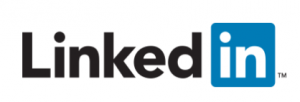This blog post is an excerpt from GovLoop’s recent guide “How to Effectively Communicate Government Workforce Reforms.” In it, we provide an overview of key workforce reforms happening at all levels of government. Download the full guide here.
Recruiting the right talent for the right positions is a critical task that government strives to do well. But it’s easier said than done.
Combing through resumes to find standout employees can be a needle-in-a-haystack endeavor that’s time and resource intensive, and not always reliable for finding the right candidates. Because the competition for talent is at an all-time high, agencies need a strategic approach to hiring and recruiting.
In a recent interview with GovLoop, Eric Owski, Head of Product, Talent Insights and Talent Brand at LinkedIn, shared current trends that are impacting the talent marketplace, how top recruiting organizations are responding to those trends and how LinkedIn fits into this changing landscape.
“The biggest trend impacting talent leaders — the people responsible for bringing talent into organizations — is more pressure to leverage data and insights to make decisions,” Owski said.
Governments are relying more heavily on data in the midst of a talent shortage for certain knowledge workers, which makes hiring qualified candidates that more challenging.
To address these issues, agencies need real-time data and insights to make quick and agile decisions on all talent matters. They need to know where their talent supply is located, how significant the demand is for that talent and how difficult it is to hire in-demand workers, Owski said.
But top organizations understand that simply having data is a starting point. The real power lies in sharing data and insights among recruiters, hiring managers and cross-functional teams that can take action based on the findings. For example, these shared insights can be used to craft relevant job announcements that attract diverse and qualified talent.
Longer term, data and insights can have a substantial impact on an organization’s talent acquisition strategy. Let’s say an agency needs to hire 70 IT professionals. Hiring managers would need to know if the market currently supports those types of positions, or if it makes more sense to develop that talent within their organization.
To successfully attract skilled workers in this competitive job market, LinkedIn is helping companies tap into their talent intelligence — the use of data and insights to improve every step of the recruitment process. Some of the workforce data that agencies need today is information they already possess. But when it comes to filling gaps and understanding trends in the larger labor market, many organizations are turning to LinkedIn as a trusted source.
“LinkedIn is in the position to tap into a rich global dataset, powered by billions of daily member updates, activities and interactions, to provide a dynamic view on rapidly changing market conditions,” Owski said.
LinkedIn has 530 million members with profiles that show their job history, including the organizations they’ve worked for and the skills that they have. There are 18 million companies represented on LinkedIn, 11 million active job listings, and 50,000 standardized skills that have been identified and endorsed more than 11 billion times.
“All of those data points are raw materials that we can turn into insights about what’s happening in the labor market,” Owski said. “We see how talent is moving between industries. We see where there are hidden gem opportunities for organizations to find talent that they might not be aware of.”
LinkedIn is taking its wealth of real-time data and insights and making them available to enterprise agencies as a self-service analytics capability called LinkedIn Talent Insights. The self-service tool, which is expected to launch in mid-2018, will give talent professionals access to two types of reporting to guide decision making: a talent pool report and a company report. Using the talent pool report, companies can understand where their talent lives and the companies and industries they work for, what schools are producing this talent and how this talent is engaging with the agency on LinkedIn. The company report shows how an agency’s workforce is distributed by function and geography, where it’s gaining talent from and losing talent to and more.
The future of recruiting lies in data-driven insights, and agencies must be ready. With sound talent intelligence, they can fundamentally transform their recruiting practices today and well into the future.






Leave a Reply
You must be logged in to post a comment.